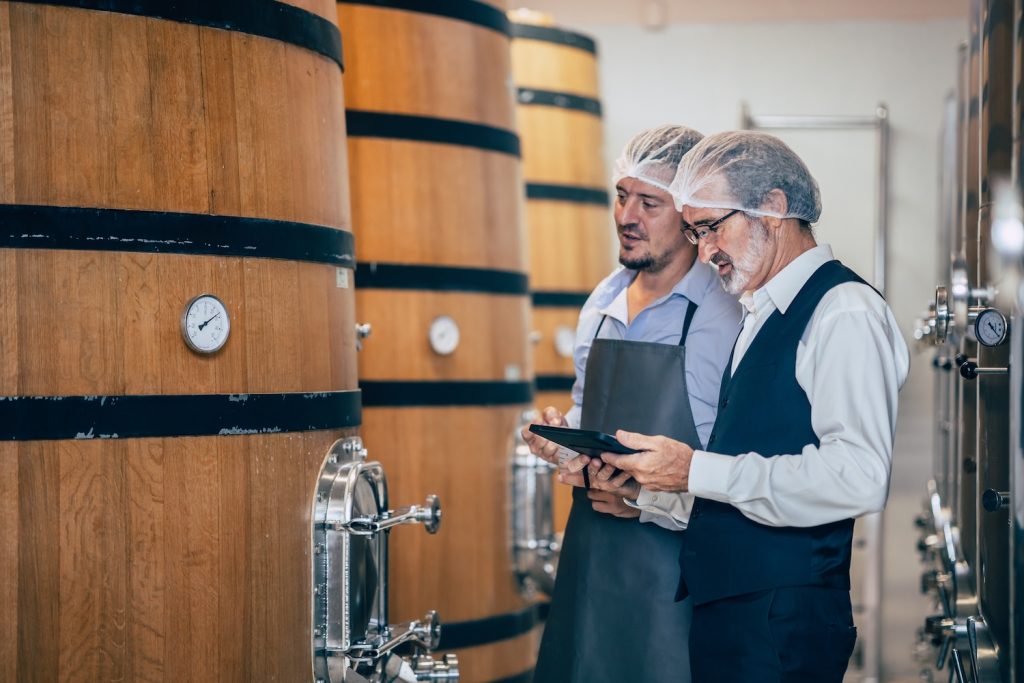Italy, home to ancient vineyards and a unique gastronomic culture, continues to be a dominant player on the international wine scene. But what’s happening in the country? What are the trends shaping the Italian wine market in 2024?
In recent years, the wine industry has faced considerable challenges that have significantly impacted its consumption patterns. As we navigate through 2024, the Italian wine market remains in a precarious position, perhaps extending into 2025.
After many years in wine sales and marketing, I can confidently call this current situation “the perfect Storm” for Italian wine. From declining sales to rising production costs, increased competition from other beverages, and a decrease in consumer purchasing power, Italian wine companies face increasingly complex challenges.
3% Drop in Volume
The Italian wine industry in 2024 experienced a mixed first half. According to the latest report from “Wine Monitor by Nomisma – Research and Business Consulting,” the Italian retail sector saw a nearly 3% drop in volume compared to the same period in 2023, despite a modest value growth (1%).
The export market shows signs of recovery for certain wine types and regions, following a less-than-rosy 2023. Most Italian wine is produced by small to medium-sized enterprises that rely heavily on exports as their business lifeline. Unfortunately, although exports are showing encouraging signs compared to 2023, they are not the cure-all for the industry’s woes.
There isn’t a single reason for this situation, and as mentioned earlier, this “Perfect Storm” is preventing the majority of Italian wineries from running a profitable business that allows for company growth.
The decline in consumption
One of the primary reasons, though not the only one, is the decline in wine consumption. One of the main factors behind this is the evolution in consumers’ preferences. This trend is not limited to Italy but is part of a global shift.
We are witnessing a rise in health consciousness, with more consumers prioritizing health and wellness and actively choosing low-alcohol or alcohol-free beverages. This trend is in contrast to the increasing popularity of spirits, cocktails, and craft beers, which are attracting younger demographics away from traditional wine consumption.
Lifestyle Choices also play a role: a shift towards a more casual dining culture has reduced the occasions when wine is typically consumed.
Changing consumption habits
It’s not just the international market that is changing; Italy, too, is seeing new trends in wine consumption. Younger generations are altering their approach to wine. Compared to previous generations, they drink less and are more selective. They look for wines that tell a story, are closely tied to their terroir, and are environmentally friendly.
On this note, Italian wine is still quite traditional and “old-style” in how it communicates its story and world. This tendency to focus on the product rather than the consumer, unlike other beverages, has led to a distancing of certain consumer segments who have found more exciting options in other drinks.
Economic factors
The economic conditions have also played a crucial role in affecting wine consumption.
Inflation is one such factor. Rising prices of everyday goods have forced consumers to cut back on discretionary spending, including luxury items like wine. However, the spirits market is experiencing an increase in consumption. This raises a double reflection: on one hand, consumers are selective due to costs, but when they do choose, they tend to choose less wine.
Another factor contributing to this instability in the wine market is that the post-COVID economic recovery has been uneven worldwide, affecting local wine sales in various areas.
Global competition
The Italian wine industry faces stiff competition, not only domestically but also internationally. Many markets offer high-quality products at more competitive prices, coupled with more appealing marketing strategies.
One sector in Italy that remains largely unaddressed is RTD (Ready-to-Drink), which is capturing an increasingly significant market share and, for various reasons, is more appealing to many consumers.
Climate change
Another difficulty is climate change. Rising temperatures and weather anomalies are impacting both the quality and quantity of wine production. Some wine regions, such as Sicily and Puglia, have been particularly affected by heatwaves and prolonged drought, with repercussions on harvests.
Many wineries are already adopting more eco-friendly practices, from reducing pesticide use to choosing more sustainable materials for bottles and packaging. Others are investing in technology, using precision agriculture systems to monitor and optimize production, reducing their environmental impact.
Climate change, which at first glance seems to affect only production, in reality, impacts the entire supply chain. Producers, whether small or large, must modify their vineyard approach, incurring higher costs to withstand excessive heatwaves or catastrophic events like excessive rainfall or even hailstorms in certain areas. All this results in higher expenses and lower profits from wine sales.
The Challenges

Looking ahead, the Italian wine industry will need to focus more on sustainability and innovation, and this is a certainty. However, what the Italian wine world must do is innovate and open up to more immediate communication to reach those generations who, for economic or taste reasons, have distanced themselves. Using innovative communication tools, in line with the era we are living in, will be crucial.
Change, Innovate, and Renew
In a crisis like this one, both in national and international sales, wineries will need to invest to change, innovate, and renew themselves.
While 2024 has started off with some difficulties, it promises to be a year of great challenges and equally great opportunities for Italian wine. On one hand, the growing demand for high-quality, sustainable products offers new growth opportunities. On the other hand, global economic and climate instability, along with declining consumption, means wineries must be more flexible and innovative to navigate market changes.
But if history has taught us anything, it’s that Italian wine has always managed to reinvent itself and remain a global player.


